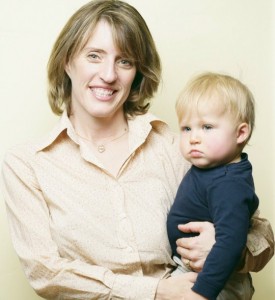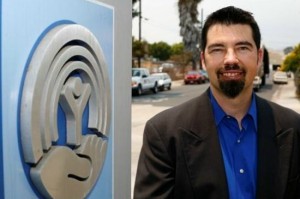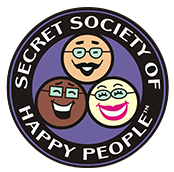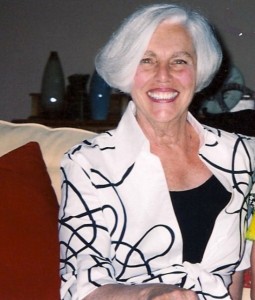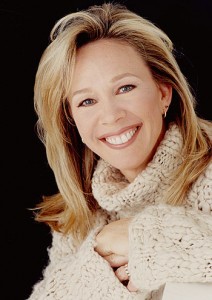
Gay Browne
The Greenopia founder publishes city guides to help consumers find environmentally friendly businesses. A Santa Barbara book is due out … soon.”
“Eat, shop, live green” is the mantra for Montecito mom Gay Browne. Her company, Greenopia, publishes Zagat-style city guides to help busy consumers find earth-friendly businesses. The Los Angeles book came out in 2006, San Francisco in 2007 and New York in 2008. She plans to expand to multiple cities across the country, including Santa Barbara, which “I promised the mayor I would do this year.”
Leslie Dinaberg: Tell me about the Greenopia books and website?
Gay Browne: It started because I have been a lifelong asthmatic and I’ve always been super conscientious about my health. … My oldest son was born with autism-related learning issues, and then I learned about him, and all of these illnesses led me to understanding that how you lead your daily life, can make a big difference in your health. … We built a house in 1994 that was the first environmental house in West Los Angeles, and in building the house I learned a whole lot inside out what goes into buildings and all of the environmental stuff and so I got fascinated about it.
…I thought I’ll create a guide, like a Michelin Guide and I’ll vet the businesses and services and I’ll give people a roadmap in clothes, in paints, in carpets in almost everything that they have an eco-friendly alternative solution.
LD: What has the response been to the books?
GB: It’s been phenomenal. … We have really done phenomenally well for being a new venture.
LD: So when you do a guide do you hire field researchers to go walk around?
GB: The way we do it is we go and we put an ad on Craig’s List or the local university, they all have environmental departments. …We’re trying to figure out a to work with universities to help cultivate their students, as well as help cultivate our criteria.
LD: That’s a great idea.
GB: The Bren School here at UCSB did a study of our research criteria of our 52 categories and they gave us some recommendations as well as a lot of good credits. And then recently we won an award from the EPA on our work for educating consumers for sustainability and climate change, which is good validation for us. But that’s how we go, we go into cities, we hire people and grid the cities, just like on a map. … And they have these 52 categories they use, they ask the questions, we put in all the data and then we come out with a leaf score of one to four leaves.
… The leaf score is not to penalize businesses for not being green, the leaf score rating is really for the consumers to know how much green is in that place, because if you were to look at a list of stores and it was McDonald’s, Shakey’s, Chinese food and a natural health store, the only reason you know that the natural health store has more health stuff is because of the name. Otherwise they could all have organic vegetables and fruits. So what we’re trying to do is give the four-leaf rating to those stores that offer more environmental friendly alternatives so the consumer who is more choosy will know.
LD: How would you think that Santa Barbara would rate?
GB: It’s small. I have to say I think we’re a little behind in the food department. There is not as much alternative for buying organic food as there is other places. Vons has a very small section of organic food. There’s the Farmer’s Market, which I personally never can get to because my kids always have sports on those days. … I think that Santa Barbara has a healthier lifestyle and the people are healthier but … I don’t see as many of the support services, like the pool guy, I want it to have no chemicals. They are not that experienced in doing that. Homebuilders, they are actually a little better, but certain categories are not as well versed. However the people that are here are more committed to living a healthy life. I don’t think that businesses have caught up with the desires that people have. … I promised the mayor I would do a guide by the end of the year, if not January 1st for sure by Earth Day.
LD: I can’t wait to see it.
GB: I started this because I became conscious about my life and I wanted other people to start being conscious about what their lives are … we have to start being really conscious of how we treat each other and how we use our resources and what our behaviors are to the planet. … My goal is treat the planet kindly, as well as each other, I think that somehow in businesses globalization that people forgot along the way that we can’t just swallow up everything.
LD: With these publications and this business that’s all over the place, how much do you need to travel?
GB: That’s a problem … there’s only one of me. … I do have to travel often. … I’m not unlike most moms with a passion. If you’ve got a passion and you’re a mom, you are dedicated to making it work. It’s hard on my kids when I’m gone. … But the good news is my husband is older and he’s semi-retired so he is around almost all the time. His office is in LA but because he’s semi-retired he goes in only every other week for two days, so it wouldn’t be possible without his financial support and his flexibility with his schedule.
LD: It sounds like you’re really, really busy, but when you’re not so busy, what do you like to do?
GB: Hang with my family. I love to play golf and tennis but I don’t play tennis or golf very much. I love to hike. I try to squeeze in a hike whenever I can, which is about once a month, and I do Yoga twice or three times a week. If I have free time I do something with the kids.
LD: If you could pick three adjectives to describe yourself, what would they be?
GB: I would say that I’m optimistic, energetic, and persistent or tenacious. If you ask my husband those are kind of an annoying three words. I tend not to get batted down until I really get batted down!
LD: I think to start any kind of a business yourself–especially something that no one has really done before–you would have to be tenacious.
GB: Right, or just naïve. You should probably be both. People say you never would have done this if you knew how hard it would be. I say not in a million years. It’s been way more work and way more money than I thought, but today when I heard that (green newsletter) Ideal Bite sold to Disney for $20 million and I have a meeting with Disney tomorrow, I’m thinking, well, maybe there’s hope.
LD: I would imagine that probably the money motivation is great, but it’s not just the money motivation.
GB: No, not at all. If I can get one mother to know that she should get her mercury tested before she has children to save her the headache and all the things I went through, or one mother who has a child with allergies to avoid allergy shots when she switches to an organic mattress because it has less molds and dust, it would make my life perfect. Money is a validation as a woman that I appreciate as an independent person, but I’m doing this because of my passion.
Vital Stats: Gay Browne
Born: Lexington, Ky., April 21, 1960, which is fitting since sometimes it falls on Earth Day.
Family: Husband, Tony; children Alex (Young) 19, Colin, 9, and Katie, 7
Civic Involvement: Works with local environmental groups such as theCommunity Environmental Council and the Environmental Defense Center. “I’m also trying to work more with the mayor’s office in supporting policies that have to do with the environment.”
Professional Accomplishments: Founder of Greenopia. Before that, spent five years working in public relations and 10 years in media advertising, including Star Magazine, Travel and Leisure Magazine and the Los Angeles Times.
Best Book You’ve Read Recently: I loved Elizabeth Gilbert’s Eat, Pray, Love. I’m also reading The Comeback, which is case studies about women going back to work.
Little-Known Fact: “I just recently began telling people that I had an eating disorder at one point in my life. I didn’t used to actually admit that very often. … Given the chance of spending the day the way I choose, I will find a hammock or a couch and lie there almost all day and read. … People think because I’m energetic that I don’t need quiet time, but I really do need quiet time. They underestimate my need for quiet. That’s why I moved to Santa Barbara, because it was quiet.”
Did you know?
Healthful tips from Greenopia:
» If every American ate just one meal a week made of locally and organically raised meats and produce, it would reduce the country’s oil consumption by more than 1.1 million barrels of oil every week.
» Among conventionally raised produce, apples, bell peppers, celery, cherries, grapes (imported), lettuce, nectarines, peaches, pears, potatoes, spinach and strawberries are the highest in pesticides. The list of conventionally raised fruits and vegetables that are lowest in pesticides includes asparagus, avocados, bananas, broccoli, cabbage, eggplant, kiwi, mangoes, onions, pineapples, sweet corn (frozen) and sweet peas (frozen).
» Replace PVC shower curtains with a natural fiber or nylon alternative. That plastic smell comes from the toxic chemicals that make PVC (polyvinyl chloride).
» Pack leftovers in reusable glass containers instead of disposable plastic bags or containers, which are made from petroleum. Recycling helps a little, but only a fraction actually gets recycled. Additionally, items that are used once then discarded will sit in landfills or blow into waterways and cause harm.
» Buy local and reduce carbon emissions. The average piece of produce travels 1,500 miles to get a grocery store.
» Research has demonstrated that when compared with other household actions that limit carbon dioxide, taking public transportation can be more than 10 times greater in reducing the greenhouse gas. It takes one solo commuter of a household to switch his or her daily driving to using public transportation to reduce the household carbon footprint by 10 percent.
Originally published in Noozhawk on July 14, 2008.
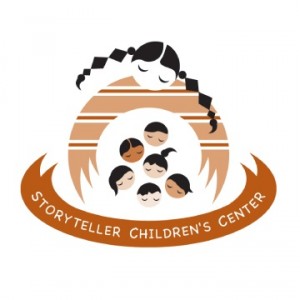 The infectious chirping of children’s laughter greets visitors. Pigtails fly as a little girl rounds the playground on a tricycle, her smile as bright as the sun. This scene could take place at any of Santa Barbara’s high quality preschool programs, with one exceptional difference–this is Storyteller Children’s Center and these children are homeless.
The infectious chirping of children’s laughter greets visitors. Pigtails fly as a little girl rounds the playground on a tricycle, her smile as bright as the sun. This scene could take place at any of Santa Barbara’s high quality preschool programs, with one exceptional difference–this is Storyteller Children’s Center and these children are homeless.
